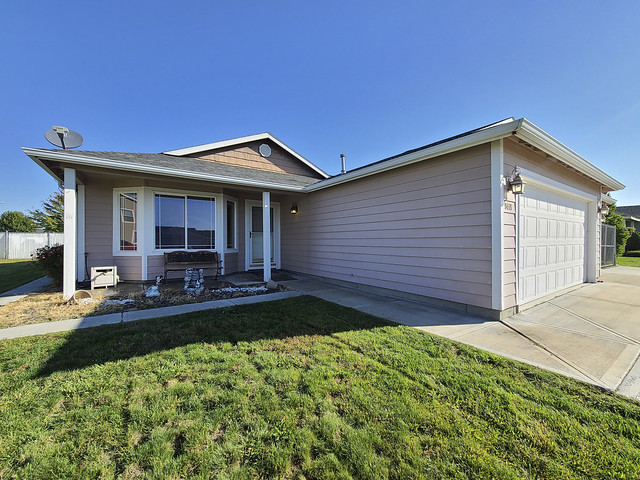 9419 Percheron Drive Pasco WA 99301 Home For Sale | $315, 000. | MLS# 256476
9419 Percheron Drive Pasco WA 99301 Home For Sale | $315, 000. | MLS# 256476
Take a look at this rare find!! Rambler with 3-car garage in West Pasco for $315,000. Seamless rain gutters, a huge patio, and sidewalk walkways all around make this home ideal for everyone. Inside and out has been well cared for. Sitting on a large corner lot, storage shelves in a garage will stay. The seller is also leaving the refrigerator, washer, and dryer. Ready for you to call your own. Upgraded interior lighting and ceiling fans. Vaulted ceiling in the Living Room. RV parking. Bay window. Please call or text Colleen @ 509.438.9344 for more information. THIS HOME IS NOW SOLD.
Tours Best Viewed Full Screen:
The Neighborhood:
Exclusively For Zillow:
Photos, Click Here for Slideshow:
Floorplan & Other County Accessor Details:
About Pasco Washington
Pasco (/ˈpæskoʊ/ PAS-koh) is a city in, and the county seat of, Franklin County, Washington, United States. Pasco is one of three cities that make up the Tri-Cities region of the state of Washington. The Tri-Cities is a mid-sized metropolitan area of approximately 296,224 people that also includes the cities of Kennewick and Richland in a 2018 estimate. Pasco's population was 59,781 at the 2010 census and 75,432 as of the July 1, 2019 Census Bureau estimate.
Pasco Washington History
On October 16, 1805, the Lewis and Clark Expedition camped in the Pasco area, at a site now commemorated by Sacajawea State Park. The area was frequented by fur trappers and gold traders. In the 1880s, the Northern Pacific Railway was built near the Columbia River, bringing many settlers to the area. Pasco was officially incorporated on September 3, 1891. It was named by Virgil Bogue, a construction engineer for the Northern Pacific Railway after Cerro de Pasco, a city in the Peruvian Andes, where he had helped build a railroad. In its early years, it was a small railroad town, but the completion of the Grand Coulee Dam in 1941 brought irrigation and agriculture to the area.
The Franklin County Courthouse in Pasco
Due in large part to the presence of the Hanford Site (which made the plutonium for the Nagasaki atomic bomb), the entire Tri-Cities area grew rapidly from the 1940s through 1950s. However, most of the population influx resided in Richland and Kennewick, as Pasco remained primarily driven by the agricultural industry, and to a lesser degree the NP Pasco rail yards. After the end of World War II, the entire region went through several "boom" and "bust" periods, cycling approximately every 10 years and heavily based on available government funding for Hanford-related work. Farming continues to be the economic driver for most of the city's industrial tax base.
In the late 1990s, foreseeing another Hanford-related boom period, several developers purchased large farm circles in Pasco for residential and commercial development. Since that time, Pasco has undergone a transformation that has not only seen its population overtake the neighboring city of Richland, but also has resulted in growth in the city's retail and tourism industries. Recently incorporated land on the West side of the city has exploded into new housing tracts, apartments, and shopping centers. This area of the city has become referred to locally as "West Pasco", distinguishing it from the older area of town to the East. In addition to an influx of new residents to the region, many residents of the Tri-Cities have moved from Richland and Kennewick to West Pasco due to its central location and virtually all-new housing and business. In early 2018, plans were announced for 5,000–8,000 new residences in West Pasco, west of Road 100. [Source: Wikipedia]
Posted by Colleen Lane on



Leave A Comment